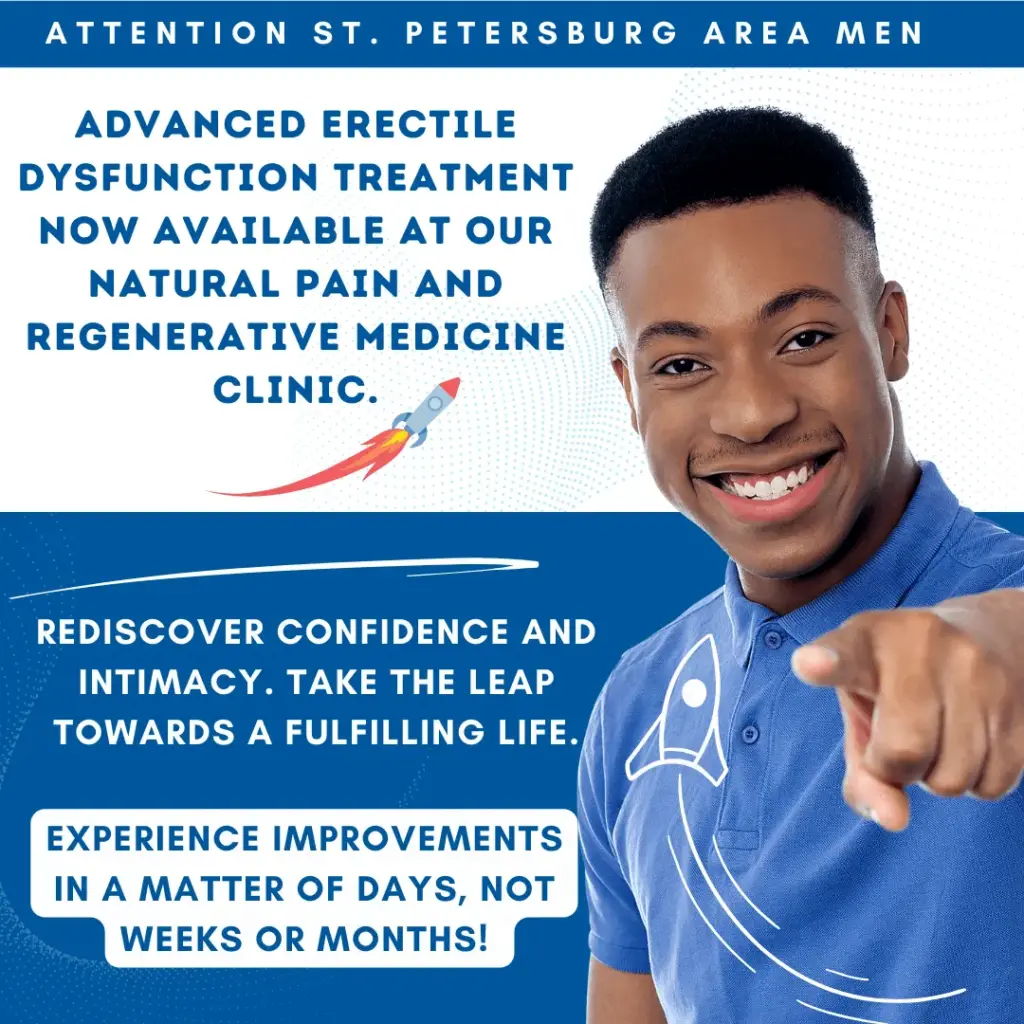Erectile dysfunction (ED), also referred as impotence, is a prevalent condition that affects a significant proportion of men, particularly with advancing age. It entails the incapacity to achieve or sustain an erection suitable for satisfactory sexual performance. Understanding the diagnostic pathways and treatment options is crucial for effective management. This article addresses both the diagnosis and treatment of ED, providing insights into the medical approaches and therapeutic strategies available to patients.
Key Takeaways
- Erectile dysfunction is a widespread condition with various underlying causes, including psychological factors, lifestyle choices, and medical conditions.
- A thorough diagnostic evaluation, including medical and psychosexual history, conducting a physical examination, and laboratory tests, is essential for uncovering the root causes of ED.
- Treatment of ED often begins with lifestyle modifications and risk factor management, with pharmacological treatments available for more immediate relief.
- Advanced therapies and surgical options exist for cases where conventional treatments are ineffective or inadequate.
- Continuous evaluation of treatment outcomes is necessary to ensure therapeutic effectiveness, manage side effects, and maintain patient satisfaction.
Understanding Erectile Dysfunction
Erectile dysfunction (ED) refers to the ongoing incapacity the continual inability to achieve or maintain an erection adequate for satisfactory sexual intercourse. This condition impacts physical health and has profound implications on psychosocial well-being for individuals and their partners. It affects the quality of life for both the individual and their partners.

Definition and Prevalence
The prevalence of ED varies widely, with estimates suggesting that between 5-20% of men experience moderate to severe forms of the condition. The likelihood of experiencing ED increases with age, highlighting the importance of understanding its impact across different life stages.
According to the 2021 National Survey of Sexual Wellbeing, the prevalence of ED based on the International Index of Erectile Function-5 (IIEF-5) scores was 24.2%. Notably, prevalence rates escalate with advancing age:
- 52.2% in the 75+ age group
- 48.0% in the 65-74 age group
The increasing prevalence of ED with age underscores the need for targeted interventions and age-specific treatment approaches to effectively manage this condition.
Identifying Common Causes
Erectile dysfunction (ED) is a multifactorial condition with numerous potential causes. Physical factors are often implicated, with conditions such as vascular diseases, which affect blood flow, playing a significant role. For instance, atherosclerosis, a condition that narrows and hardens the arteries, can impede blood flow to the penis and contribute to ED. Hormonal imbalances and neurological disorders are also notable physical causes.
Psychological factors should not be overlooked, as they can be equally influential. Stress, anxiety, and relationship issues can interfere with sexual arousal, which is a complex interplay of hormones, emotions, and brain activity. Addressing these psychological aspects is crucial for a comprehensive approach to treatment.
Identifying and treating the root causes of erectile dysfunction is essential, as it often improves the condition significantly. Risk factors contributing to erectile dysfunction encompass lifestyle choices and medical conditions. Identifying reversible risk factors is crucial; they offer insights into effective treatment strategies. Assessing psychosocial status is important for determining effective treatment strategies.
Psychosocial and Lifestyle Factors
Psychosocial and lifestyle factors significantly influence erectile dysfunction (ED), beyond its physiological aspects. The interplay between mental health, relationship dynamics, and personal habits can profoundly affect sexual function.
Lifestyle choices such as tobacco use, alcohol intake, and poor dietary habits contribute to the development of ED. These factors can lead to vascular problems, hormonal imbalances, and other health issues that impede erectile function. Addressing these lifestyle elements is a critical step in managing ED.
The management of ED requires a holistic approach that includes psychological support and lifestyle modifications alongside medical interventions.
The following list highlights some key lifestyle factors associated with ED:
- Age
- Tobacco use
- Alcohol consumption
- Inadequate interpersonal relationships
- Poor sexual techniques
It is essential to recognize that while some risk factors like age cannot be changed, others such as smoking and excessive alcohol use are modifiable. We highly recommend health education and lifestyle modification to alleviate the burden of ED in patients.
Diagnostic Approach to Erectile Dysfunction
A thorough medical and psychosexual history is the cornerstone of diagnosing erectile dysfunction (ED). This process entails using validated instruments, such as the International Index of Erectile Function. (IIEF), to identify common causes of ED, assess psychosocial status, and pinpoint other sexual problems that may coexist. Gathering this history is crucial for understanding the individual’s sexual health and guiding further diagnostic testing.
Medical and Psychosexual History
The medical and psychosexual history should be comprehensive, exploring areas such as past medical events, current health conditions, medications, and detailed sexual experiences. This narrative helps to reveal reversible risk factors and informs the selection of appropriate laboratory tests and physical examinations.
The following list outlines key components typically included in the medical and psychosexual history:
- Identification of any signs of hypogonadism or prostatic disease
- Evaluation of cardiovascular and neurological status
- Inquiry into potential penile deformities or conditions (e.g., Peyronie’s disease)
- Consideration of psychosocial factors and relationship dynamics
Understanding the patient’s history not only aids in diagnosis but also tailors the treatment plan to the individual’s specific needs.
Focused Physical Examination
A focused physical examination is a critical step in the diagnostic process for erectile dysfunction (ED). It aims to uncover any underlying medical conditions that might contribute to ED. The examination typically includes an assessment of the vascular, neurological, and endocrine systems. Special attention is given to the genitalia to identify any structural or anatomical abnormalities, such as Peyronie’s disease, which could affect sexual function.
During the examination, the healthcare provider may also look for signs of hormonal imbalances, such as gynecomastia or hair loss, which can indicate endocrine disorders. It is essential to distinguish ED from other sexual dysfunctions, such as premature ejaculation (PE), which may coexist. The physical examination should be non-invasive and respectful, ensuring patient comfort and privacy.
The physical examination not only aids in diagnosing ED but also helps in identifying other potential sexual dysfunctions or genitourinary infections that should be addressed concurrently.
The following table summarizes the key components of the focused physical examination for ED:
| System Examined | Observations Sought |
| Vascular | Pulse, blood pressure, signs of atherosclerosis |
| Neurological | Sensory function, reflexes, autonomic neuropathy |
| Endocrine | Signs of hormonal imbalances, gynecomastia |
| Genitalia | Structural abnormalities, Peyronie’s disease |
Patient education is an integral part of the examination process. It involves informing the patient about the nature of the examination, what to expect, and the significance of the findings in relation to their sexual health.
Laboratory Tests and Other Assessments
To accurately diagnose erectile dysfunction, a series of laboratory tests are essential. These tests often include a glucose-lipid profile and a measurement of total testosterone levels, particularly in the morning when levels are highest. If possible, assessing bio-available or free testosterone can provide additional insights.
Laboratory assessments are essential not only for diagnosis but also for monitoring treatment effectiveness and identifying potential side effects. Additional diagnostic tests may be necessary depending on individual patient needs or specific requests. These can include nocturnal penile tumescence and rigidity (NTPR) tests, vascular studies, or for medico-legal reasons such as penile prosthesis implant considerations or cases of sexual abuse.
Treatment Strategies for Erectile Dysfunction
Addressing lifestyle factors is a cornerstone in the management of erectile dysfunction (ED). Weight loss, regular exercise, and quitting smoking are established strategies that can significantly improve erectile function. Moderation of alcohol consumption is also recommended, as excessive intake can exacerbate ED symptoms.
Lifestyle Modifications and Risk Factor Management
Lifestyle changes not only improve ED but also address the underlying health issues contributing to it. For instance, a healthy diet and exercise regimen can improve a glucose-lipid profile and total testosterone levels, which are critical in reversing modifiable lifestyle factors associated with ED.
The following table summarizes key lifestyle modifications and their potential impact on ED:
| Lifestyle Change | Potential Impact on ED |
| Weight Loss | Improves blood flow and hormone levels |
| Regular Exercise | Enhances cardiovascular health |
| Smoking Cessation | Reduces vascular damage |
| Alcohol Moderation | Prevents nerve damage and hormonal imbalance |
Highly recommend emphasizing health education and lifestyle modification to alleviate the burden of erectile dysfunction among patients. It is essential to provide education and counseling to patients and their partners about the benefits of these lifestyle changes. Shared decision-making and adequate use of treatment options can lead to more successful outcomes.
Pharmacological Treatments
Pharmacological treatments play a pivotal role in managing erectile dysfunction (ED). Healthcare providers commonly prescribe oral medications, with Sildenafil (Viagra) and Tadalafil (Cialis) being popular choices. Users particularly note Tadalafil’s ability to be taken daily, offering greater spontaneity as it doesn’t require timing before sexual activity.
In cases where oral medications are ineffective or unsuitable, alternative pharmacological options include intracorporeal injections and intraurethral suppositories. These treatments may involve administering agents such as phentolamine, papaverine, or prostaglandin E directly to the penile tissue.
While pharmacotherapy is the cornerstone for treating conditions like lifelong premature ejaculation (PE), it’s important to note that many medical treatments are off-label. SSRIs for daily use and topical anaesthetics have shown consistent efficacy in managing PE.
For individuals with ED, healthcare providers may recommend a combination of pharmacotherapy, relationship counseling, and behavioral therapy to address the multifaceted nature of the condition. It’s crucial to evaluate the effectiveness of pharmacological treatments and consider graduated withdrawal after a period of 6-8 weeks.
Advanced Therapies and Surgical Options
When conventional treatments for erectile dysfunction (ED) are ineffective, patients may consider advanced therapies and surgical options. Vascular reconstructive surgery is one such option, potentially benefiting a small percentage of patients with specific vascular issues. This includes procedures such as arterial bypass and venous ligation, which are major surgeries with inherent risks.
Although not universally accepted, some patients explore hormonal replacement therapy. It’s important to note that certain therapies, like cryotherapy and bioidentical hormone replacement, are still considered investigational and carry their own set of risks.
For those seeking non-pharmacological solutions, options extend to vacuum erection devices, penile implants, and injection therapies. These methods can be especially beneficial useful for individuals who have not found success with oral medications or who prefer alternative treatments.
Psychological counselling and sex therapy are also important components of a comprehensive treatment plan, especially when ED has a psychological basis. Addressing communication and intimacy through couples therapy can significantly improve treatment outcomes.
Alternative Treatments using Regenerative Medicine
Alternative treatments for erectile dysfunction can include options such as the penile male enhancement shot.
This natural method enhances male performance without the need for drugs or invasive surgeries. This treatment utilizes regenerative medicine products such as platelet-rich plasma (PRP), which involves spinning down your own blood, amniotic tissue allografts, or human biologics like mesenchymal stem cells to enhance sexual arousal and combat erectile dysfunction.
If you are seeking for better, more natural, and enduring results, the Penile male enhancement shot presents an excellent option.
How is the Procedure Performed.
The procedure starts by numbing the target areas, then injecting the PRP, amniotic tissue, or human biologics strategically into specific locations along the patient’s penis using a tiny needle. To enhance the effects of the injection, healthcare providers use a penis pump immediately afterward to evenly distribute the plasma throughout the penis. Healthcare providers encourage patients to use the pump regularly to further optimize outcomes.
Low Intensity Extracorporeal Shock Wave therapy Modality for enhanced performance
A new and revolutionary treatment that is now being used for Erectile dysfunction is low intensity extracorporeal shock wave therapy. Shock wave therapy utilizes acoustic sound waves that sends short, frequent, and high-intensity bursts of mechanical energy (in the form of a shock waves) into soft-tissue. This treatment helps enhance angiogenesis, which is the formation of new capillaries and blood vessels, thus helping in erectile dysfunction.
This treatment also enhances your own bodies stem cells within 45 minutes of treatment, thus enhancing your own bodies healing potential. Thus performing this treatment two times per week for 8 to 12 treatments can enhance the bodies own healing potential, and increase vascularization to help with erectile dysfunction. This treatment is also painless and extremely cost effective with no side effects.
Assessing Therapeutic Effectiveness
Assessing the therapeutic effectiveness of treatments for erectile dysfunction (ED) is crucial to ensure that patients receive the most beneficial care. Blood tests are often utilized to monitor the treatment’s impact and to check for any adverse side-effects. A structured approach to evaluation can include assessing the erectile response, side-effects, and overall satisfaction with the treatment.
The goal of treatment is not only to improve erectile function but also to enhance the patient’s sexual satisfaction and quality of life.
For instance, the effectiveness of treatments like Low-Intensity Extracorporeal Shock Wave Therapy (Li-ESWT) can be compared to placebo in improving vascular-origin ED. Clinical trials and patient-reported outcomes are essential in this process. The table below summarizes the outcomes of two different treatments, showcasing the importance of rigorous assessment:
| Treatment | Efficacy (%) | Sexual Satisfaction (%) | Adverse Effects |
| Placebo | 15.09 | 19.81 | None observed |
| SS-cream | 79.81 | 82.19 | Mild local burning and pain (18.49%) |
It is important to note that while some treatments may show high efficacy, the presence of side effects such as a mild local burning sensation in 18.49% of SS-cream trials must be taken into consideration. This highlights the need for a balanced approach to treatment, where both the benefits and potential drawbacks are carefully weighed.
Managing Side Effects and Patient Satisfaction
When managing side effects and ensuring patient satisfaction, it is crucial to consider the individual’s experience with the treatment regimen. Assessing the balance between therapeutic benefits and side effects is a key component of successful management. Patients may experience a range of side effects, from mild to severe, and their tolerance to these effects can significantly influence satisfaction and adherence to treatment.
Options to enhance patient satisfaction include re-education on the use of PDE5 inhibitors, psychosexual therapy, and lifestyle modifications. It is also important to assess the adequacy of dosage and timing of medication to optimize its efficacy. For those with persistent side effects or inadequate response, alternative therapies or combination treatments may be considered.
When traditional treatments are ineffective or side effects are intolerable, exploring advanced options like endovascular treatment or penile prosthesis implantation is advisable. These interventions require careful patient selection and counseling to ensure realistic expectations and satisfaction with the outcomes.
Shared decision-making is vital in managing treatment outcomes. Patients should be actively participate in their treatment plans, which may include identifying and treating any ‘curable’ causes of ED, lifestyle changes, and risk factor modification. Education and counseling for both patients and partners play a significant role in this process.
Considerations for Treatment Adjustment or Referral
When evaluating the need for treatment adjustment or referral in erectile dysfunction (ED), it is crucial to consider the patient’s response to current therapies and their overall satisfaction. Assessment of therapeutic outcomes should be an ongoing process, with attention to the efficacy, safety, and patient and partner satisfaction.
- Assess the erectile response and any side effects.
- Evaluate patient and partner satisfaction with the current treatment.
- Determine if there is a need for dose adjustment or a change in medication.
- Consider alternative therapies or combination treatments if initial therapies are ineffective.
- Consider referring to a specialist for exploring advanced treatment options.
In cases where treatment outcomes are inadequate, a thorough review of potential ‘curable’ causes of ED should be undertaken. This may include lifestyle changes, risk factor modification, and additional education and counseling for patients and partners.
Referral to a specialist may be warranted for complex cases or when standard treatments fail to provide satisfactory results. Shared decision-making and clear communication between the patient, partner, and healthcare provider are essential to navigate the next steps in management.
Support and Education for Patients and Partners
Counseling plays a pivotal role in managing erectile dysfunction (ED), particularly when the condition stems from psychological factors or relationship issues. Sex therapy is a form of counseling that aids individuals and couples cope with the challenges ED presents. It often involves addressing communication and intimacy issues, essential for fostering a healthy sexual relationship.
The Role of Counseling in Erectile Dysfunction
- Provide education and counseling to patients and partners
- Assess adequate use of treatment options
- Offer conjoint psychosocial and medical treatment
Counseling aims not only to improve sexual function but also to improve overall emotional well-being and relationship dynamics. It is a collaborative process that involves shared decision-making and may include a variety of therapeutic interventions.
Identifying ‘curable’ causes of ED is a key step in treatment. Lifestyle changes and risk factor modification are often recommended alongside counseling to ensure a comprehensive approach to treatment. Patients are encouraged to initiate or resume sexual activity in accordance with their comfort and health status, taking into consideration any cardiovascular risks.
Shared Decision-Making and Treatment Planning
In the management of erectile dysfunction (ED), shared decision-making is a pivotal step that ensures treatment plans are personalized to the individual’s preferences and expectations. This collaborative process involves a thorough discussion between the patient, their partner, and the healthcare provider regarding the potential benefits and risks of various treatment options.
- Identify patient needs and expectations
- Assess the adequacy of current treatment
- Discuss alternative or combination therapies
- Offer conjoint psychosocial and medical treatment
The success of ED treatment is not solely measured by the restoration of erectile function, but also by the satisfaction of the patient and their partner with the chosen therapy. It is essential to provide education and counseling to support informed decision-making and to manage expectations realistically.
Treatment outcomes should be regularly evaluated, with adjustments made as necessary to address any inadequacies. This may include re-trial of treatments, modification of dosages, or the introduction of new therapies. The ultimate goal is to achieve a satisfactory sexual experience for both the patient and their partner.
Addressing Emotional Well-being and Relationship Dynamics
Erectile dysfunction (ED) not only impacts the individual but also has a profound impact on relationship dynamics and emotional well-being. Addressing these aspects is crucial for the revival of passion and intimacy in a relationship. Coping with intimacy challenges requires patience, understanding, and a readiness to explore new ways of connecting. Couples can benefit from open communication about their needs and concerns, which often leads to a more satisfying sexual and emotional connection.
The journey to overcome the hurdles of ED should be a shared experience, fostering a supportive environment that can enhance the emotional well-being of both partners.
While medical treatments focus on the physical aspects of ED, it’s important to recognize the psychosocial correlates that contribute to sexual satisfaction. A comprehensive approach that includes both partners in the treatment process can result in improved outcomes. The following list outlines key areas to consider for enhancing emotional support:
- Encouraging mutual understanding and patience
- Facilitating open and honest communication
- Exploring new forms of intimacy and connection
- Seeking professional counseling if needed
Ultimately, the goal is to cultivate a supportive and nurturing environment that enables both partners to thrive emotionally and reconnect on a deeper level.
Conclusion
Erectile dysfunction (ED) can profoundly affect a man’s quality of life and intimate relationships. While the incidence of ED increases with age, modern diagnostic protocols and treatment options offer hope for effective management and satisfactory sexual function. From lifestyle modifications and pharmacotherapy with PDE5 inhibitors to advanced therapies like vacuum devices, injection therapy, and even surgical interventions, the array of treatments available means that most men can find a solution tailored to their needs. It is crucial for patients to engage in open dialogue with healthcare providers, explore underlying causes, and participate in shared decision-making to optimize treatment outcomes. With the right approach, ED can be managed successfully, allowing individuals to regain confidence and enjoy a fulfilling sex life.
Frequently Asked Questions

What is erectile dysfunction (ED)?
Erectile dysfunction is the inability to achieve and maintain an erection suitable for sexual intercourse. It affects a significant percentage of men, particularly as they age.
How common is erectile dysfunction?
With age, the occurrence of erectile dysfunction tends to increase. Around 20% of adult men experience ED, and this figure rises to 50% for men aged 40 and above.
Can erectile dysfunction be treated?
Yes, erectile dysfunction is treatable. Modern treatment protocols allow the majority of patients to successfully achieve penetrative sex, irrespective of the underlying causes.
What are the common causes of erectile dysfunction?
Common causes of ED include cardiovascular disease, diabetes, psychological issues, hormonal imbalances, and lifestyle factors such as smoking and excessive alcohol consumption.
What should I expect during a diagnostic evaluation for ED?
The diagnostic approach to ED typically involves a medical and psychosexual history, a focused physical examination, and laboratory tests to identify underlying conditions or risk factors.
What are the available treatments for erectile dysfunction?
Treatment options for ED include lifestyle modifications, pharmacological treatments such as PDE5 inhibitors, penile injections, vacuum devices, and in some cases, advanced therapies, regenerative medicine therapies, modalities such as shock wave therapy or surgical options.
If you are looking for suffering with Erectile dysfunction and would like to learn more about options for erectile dysfunction that are regenerative reach out to Waters Edge Medical clinic and Spa. We offer a free consultation and evaluation to see if regenerative medicine and shock wave therapy is right for you. You can reach us at 727-550-0855.


